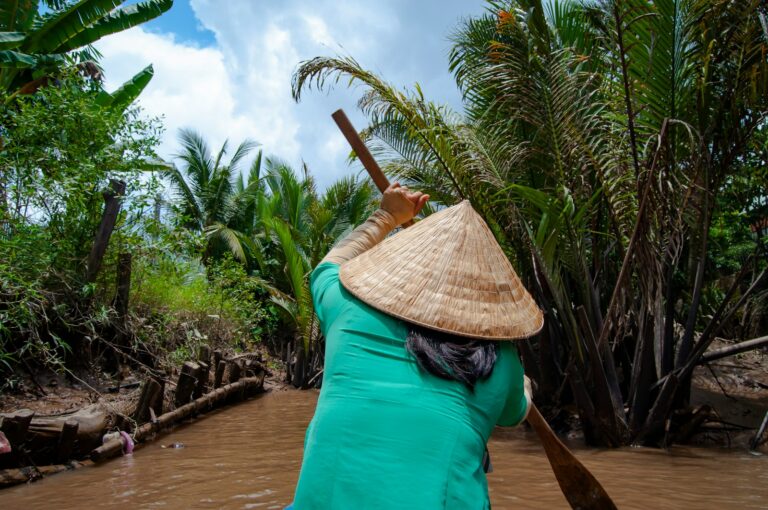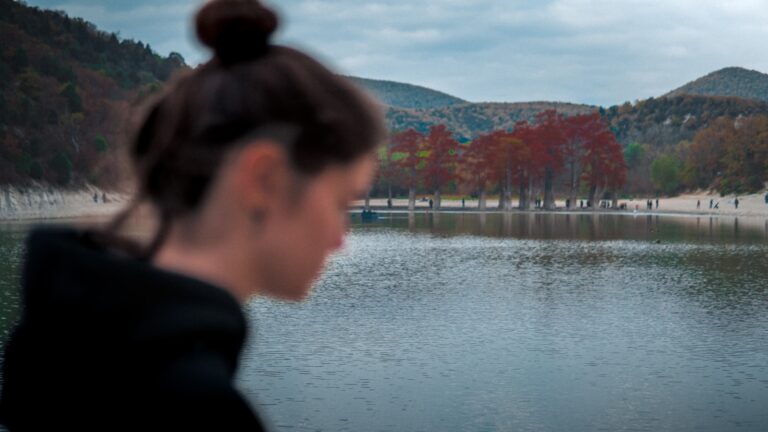How Chatuchak Market Weaves Thailand’s Shopping Dreams
The first tendrils of dawn curl over Bangkok, painting the sky in hues of rose and tangerine. While much of the city still slumbers, a different kind of awakening stirs within the vast, labyrinthine expanse of Chatuchak Weekend Market. Trucks rumble to a halt, metal shutters screech upwards, and a symphony of voices begins – vendors calling out greetings, carts rattling over concrete, the first eager shoppers already scanning the horizon of stalls. This isn’t just a market; it’s a living, breathing organism, a pulsating heart of commerce that defines Thailand’s audacious ambition to become Asia’s ultimate shopping destination, catering to princes and paupers alike.
For decades, the narrative of Southeast Asian luxury shopping centered on Singapore’s gleaming Orchard Road. But for those seeking treasures without the astronomical price tags, Thailand, the Land of Smiles, has always beckoned with a different siren song. And nowhere sings it louder, brasher, or more irresistibly than Chatuchak. On any given weekend, this behemoth swallows an estimated 200,000 to 300,000 souls daily – a human river flowing through narrow alleys, a testament to its magnetic pull. It’s transformed Thailand from a mere bargain-hunter’s paradise into a critical wholesale hub, drawing not just backpackers laden with souvenirs but serious buyers sourcing goods for stores continents away. The allure? An almost unimaginable variety, consistently low prices, and an accessibility woven into the fabric of Bangkok itself.
Reaching Chatuchak is a lesson in Bangkok’s chaotic efficiency. You can brave the colourful chaos of a tuk-tuk, navigate the labyrinthine bus routes, or hail an air-conditioned taxi. But the true arteries feeding this retail monster are the city’s modern transit lines. Descend into the cool, tiled depths of the MRT (subway) and alight at Chatuchak Park Station. Emerge, blinking, into the sunlight, and the market sprawls directly across the street, an immediate sensory overload. Alternatively, ride the elevated BTS Skytrain to its terminus at Mo Chit Station. Descend the stairs, follow the stream of humanity along the verdant edge of Chatuchak Park for mere minutes, and the sheer scale of the marketplace hits you – a seemingly endless sea of canvas roofs stretching far into the distance. This ease of access is deliberate, part of the market’s democratic ethos.
The Colossal Maze of Commerce
Encompassing a staggering 1.13 square kilometers – equivalent to over 150 football fields – and housing approximately 15,000 stalls, Chatuchak isn’t just Thailand’s largest market; it proudly holds the title of the world’s largest weekend market. It operates primarily on Saturdays and Sundays, transforming a relatively quiet zone during the week into a frenetic epicenter of global trade on a micro-scale. To declare it sells “everything” feels like an understatement. Wander its numbered sections (a map is not just recommended, it’s survival gear), and you traverse universes: stacks of vibrant silks and knock-off designer jeans give way to intricate hand-carved teak elephants and gleaming Buddha statues; the scent of sizzling pad thai and sweet mango sticky rice mingles with the earthy smell of potted plants and the sharp tang of leather goods; stalls overflow with vintage records, live puppies (a controversial section), gleaming ceramics, antique furniture, and every conceivable household item. It’s a tangible, overwhelming encyclopedia of material desire.
The lifeblood of Chatuchak is wholesale. This is where resellers from across Thailand and beyond come to fill their vans and shipping containers. Navigating its entirety comprehensively? Veteran stallholders chuckle, suggesting you’d need a minimum of three full days, and even then, you’d barely scratch the surface. Textiles reign supreme: mountains of t-shirts, racks bursting with flowing cotton dresses, stalls dedicated solely to socks, hats, or denim. The sheer volume dictates the pricing principle: cheap. Quality is generally average – functional, often trendy, but rarely built for decades. This is fast fashion and accessible handicrafts at their source.
The Delicate Dance of the Deal
Here lies the market’s unique charm and challenge: the art of the transaction. Prices are rarely fixed, and comparison is a dizzying task. The golden rule? Buying multiple items slashes the per-unit cost dramatically. A single, breezy cotton t-shirt might be priced at 100 baht (roughly $3 USD). Ask for three, and the price magically drops to 200 baht total. Sunglasses displayed at 80 baht each become 150 baht for two. The baseline is low – t-shirts starting around 50 baht, simple dresses hovering between 100-300 baht – but the variation is constant. The paralyzing moment comes when you see an identical woven bag priced at 300 baht one stall over, only to find it for 200 baht at the next. Is the stitching slightly better? Is the dye more vibrant? Or is it pure luck? You gamble, trusting your eye and intuition.
The sellers, weathered by the constant ebb and flow of global crowds, are generally pleasant, though perhaps not exuding the same unfettered warmth as in Thailand’s quieter corners. They observe, they beckon gently, but rarely engage in the aggressive hard-sell tactics feared by tourists. Haggling is expected, part of the cultural choreography. However, seasoned Chatuchak visitors know the discount ceiling is lower here than in smaller, tourist-focused markets. Aiming for 20-30% off the initial asking price is realistic; demanding half is likely to be met with a polite but firm shake of the head or a weary smile.
This negotiation, however, transcends mere price reduction. As a savvy Vietnamese tour guide once quipped, it becomes a “calculator battle.” Buyer and seller, faces often impassive, tap numbers silently onto a handheld calculator, passing it back and forth like duelists. Tap-tap-tap (buyer’s offer). Pause. Tap-tap (seller’s counter). Tap (buyer’s final stand). A nod, a slight frown, a shrug, then a smile – the calculator displays the victor’s price. It’s a game, often enjoyed by both parties. “Shopping while traveling,” the guide mused, “is emotional. Tourists buy when they feel happy, connected. Sometimes, the thrill of the ‘battle,’ the interaction itself, is the value. They leave clutching their purchase, content, not always certain if it was the ‘best’ price, but sure it was “their” price, won in the arena of Chatuchak.”
Amidst the authentic Thai crafts and local designs, a parallel reality exists: stalls overflowing with mass-produced plastic trinkets, electronic gadgets of dubious origin, and synthetic fabrics, often bearing the unmistakable stamp of imports from China. It’s a reminder of the market’s role in the globalized flow of goods, catering to every tier of demand, quality, and budget.
Beyond the Bargain Basement
Yet, Thailand’s shopping vision extends far beyond the sprawling, sweaty democracy of Chatuchak. Just a Skytrain ride away, air-conditioned palaces of luxury rise: the gleaming mega-malls of downtown Bangkok. Siam Paragon stands as a cathedral to high-end consumption, its cavernous halls housing flagship stores of Hermès, Chanel, Burberry, Hugo Boss, Gucci, and Versace, radiating an aura of exclusivity. It boasts not just fashion empires but Southeast Asia’s largest aquarium and Bangkok’s most expansive cinema complex – entertainment woven into the fabric of luxury.
Crucially, however, Siam Paragon, and its siblings like Central World, Erawan Bangkok, and the Silom complexes, understand the Thai market’s diversity. Alongside the rarefied air of haute couture, you find popular high-street brands, tech stores, bookshops, and vast food courts offering affordable Thai classics. This deliberate inclusivity is strategic. The Tourism Authority of Thailand notes that international shoppers constitute about 40% of Siam Paragon’s clientele, predominantly from high-spending neighbors like Japan, Singapore, and Hong Kong. The malls cater to the local middle and upper class alongside the tourist dollar, creating a complete ecosystem.
Thailand isn’t content merely being a bargain alternative. It harbors a concrete, government-backed ambition: to dethrone Singapore and challenge Hong Kong as Asia’s premier shopping destination, while simultaneously fending off the rise of Kuala Lumpur. Areepong Bhoocha-oom, the Finance Ministry’s Permanent Secretary, articulated this vision clearly, stating the government has enacted policies to actively transform Bangkok into a “shopping paradise.” The cornerstone of this strategy is a dramatic overhaul of import duties. Taxes on the very symbols of luxury – perfumes, cosmetics, watches, leather goods – are being slashed from a hefty 30% down to a negligible 0-5%, a change targeted for completion by the end of this fiscal year. The math is simple: lower taxes mean lower retail prices, making those coveted Chanel bags or Creed fragrances significantly more attractive compared to Singapore or Hong Kong.
Further sweetening the pot, Thailand’s Value Added Tax (VAT) stands at a competitive 7%, matching Singapore’s rate. While Singapore remains inherently expensive due to other costs, and Malaysia often undercuts on price, Thailand is positioning itself aggressively in the middle: offering luxury goods at prices aiming to match or even beat Malaysia, within a more developed, sophisticated retail environment. Mirroring its competitors, Thailand also offers VAT refunds for tourists – a powerful incentive. Spend over 2,000 baht in a single store (a relatively easy threshold in a mall or boutique), present your passport and receipts, and a portion of the tax is returned, effectively giving an automatic discount.
The rhythm of the retail calendar is also harnessed. Thailand enthusiastically embraces major sales seasons, typically mid-year (June-July) and year-end (December-January), where significant discounts cascade through stores, especially on previous season’s luxury items or surplus stock. It’s a coordinated effort to create perpetual shopper excitement.
The Complete Tapestry
Scenically, Thailand might concede that Vietnam’s natural landscapes possess a wilder, perhaps more dramatic beauty. But where Thailand excels, with almost unmatched prowess, is in the orchestration of tourism and retail. It understands the spectrum of desire. It offers the dizzying, democratic frenzy of Chatuchak, where every baht is stretched, haggled over, and celebrated. Simultaneously, it presents the hushed, curated luxury of Siam Paragon, where price tags are discreet but the experience is lavish. And crucially, it fills the vast middle ground with modern malls, local boutiques, and accessible brands.
The strategy of cutting import taxes isn’t just about moving luxury goods; it’s a calculated move in a high-stakes regional competition. It signals that Thailand isn’t resting on its laurels as a backpacker haven. It wants the high rollers too. It wants the Singaporean executive flying in for a weekend of luxury deals, the Japanese fashionista sourcing unique streetwear, the Malaysian family on a bargain hunt, and the budget traveler marveling at a 50-baht t-shirt in Chatuchak.
In the steamy alleys of Chatuchak, amidst the calculator battles and the scent of grilling meats, and in the chilled marble halls of Siam Paragon, beneath the glow of designer logos, Thailand is meticulously stitching together its identity as Asia’s most versatile, most irresistible shopping destination. It’s a land where the smile extends not just from the people, but from the wallets of satisfied shoppers, whether they leave clutching a priceless antique, a counterfeit handbag, a genuine designer accessory bought tax-free, or simply the exhilarating memory of the greatest market on earth. The Land of Smiles is, unequivocally, becoming the Land of Sales, mastering the art of catering to every whim and wallet under the relentless Bangkok sun.




